USS Constitution‘s bow has been variously decorated over the past 220 years. In Bow Decor, the different figureheads and billetheads were discussed. But the decoration didn’t stop there. The cutwater, which projects from the ship’s stem, has also been embellished. Gracing the curve of the cutwater are the trailboards, decorative elements that enhance the look of the ship.
“Trail-Board, in Ship-Building, a term used for the carved work between the cheeks of the head, at the heel of the figure.” [The Cyclopaedia: or, Universal Dictionary or Arts, Sciences, and Literature, 1819]
Just as Joshua Humphreys, the ship’s designer, did not, in 1794, specify a design for Constitution‘s figurehead, he likewise did not indicate a design of the first trailboards, if any were carved for the bow at the time of the building of the ship.
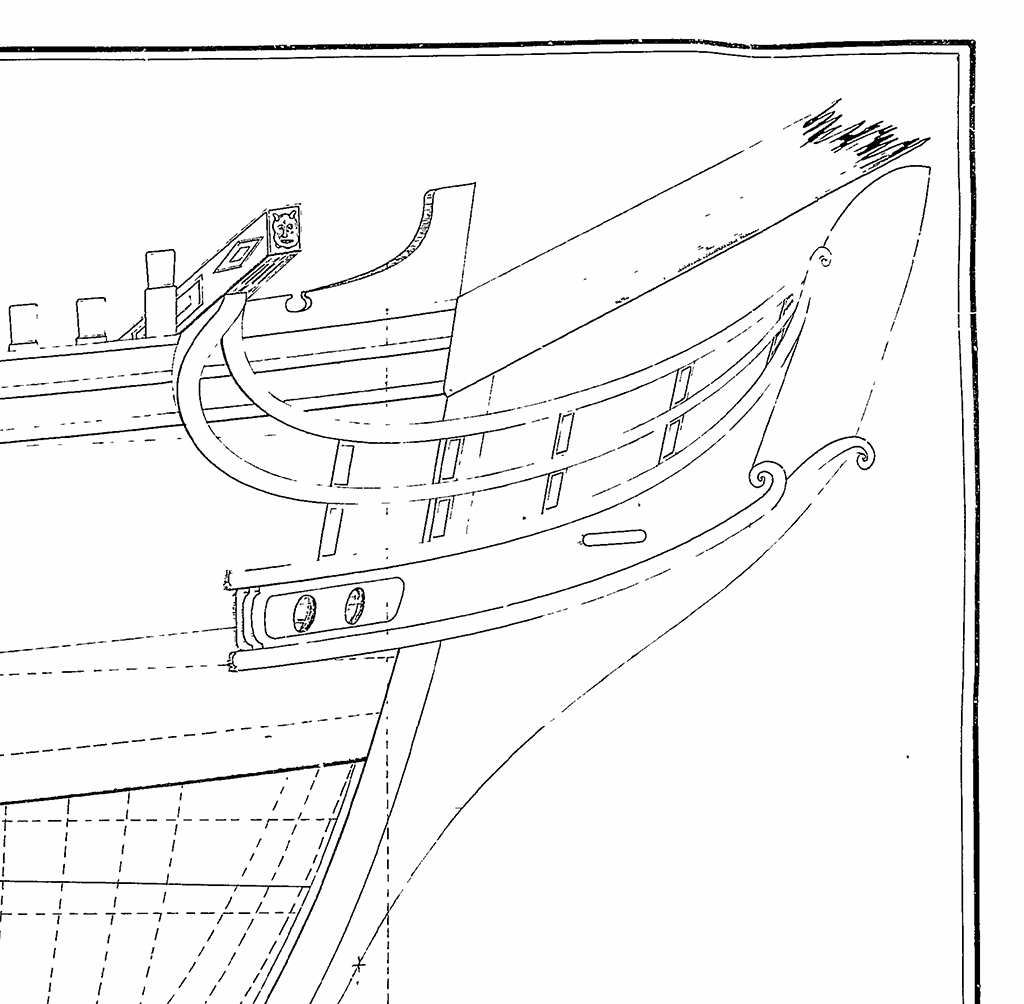

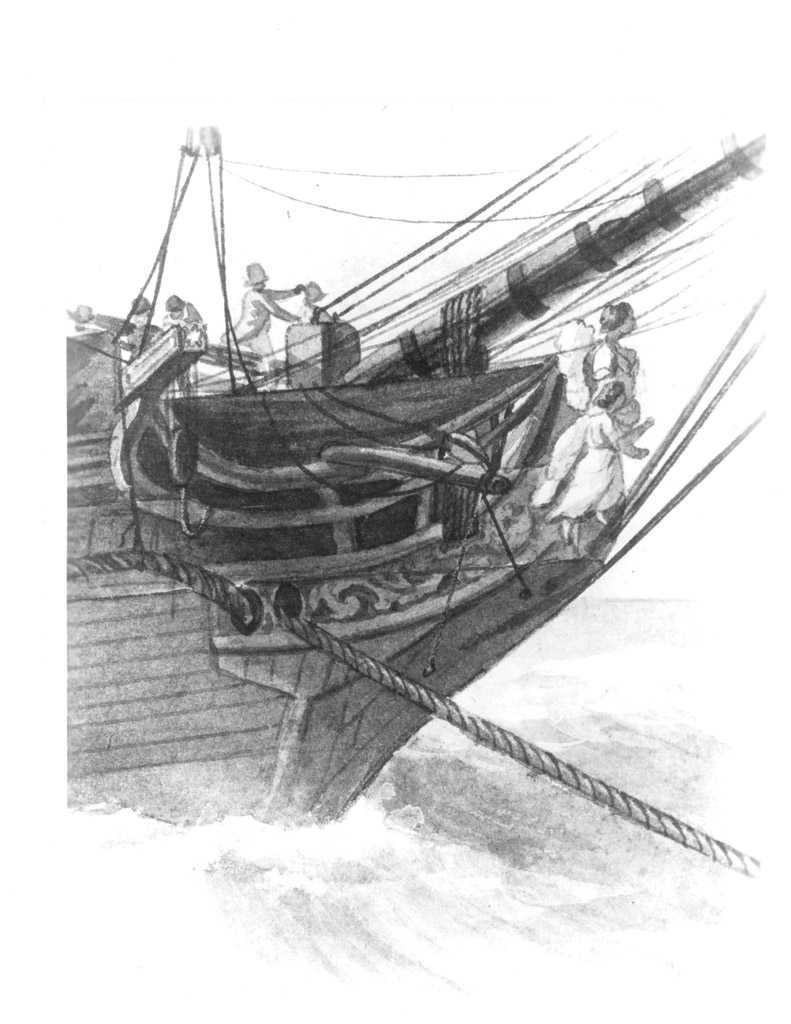

The oldest documented model of USS Constitution, made in 1812 by the ship’s crew for their captain, Isaac Hull, provides the first clear indication of trailboards on the cutwater. A “dragon” appears to be carved in the bottom edge of the 1812 trailboards. Sweeping further up the trailboards, towards the billethead, are military trophy motifs that may have been a sword, cannon barrel, and another martial implements, and then swirling vines top off the trailboards.
“Emblematical heads consist of appropriate figures, such as…a Dragon, denoting power, vigilance, etc.” [Definition of HEAD from Falconer’s New Universal Dictionary of the Marine, 1815]
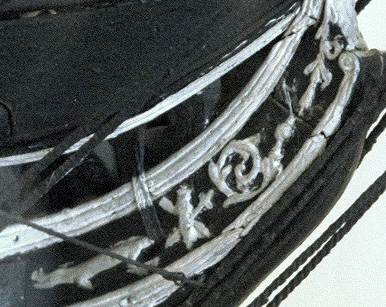

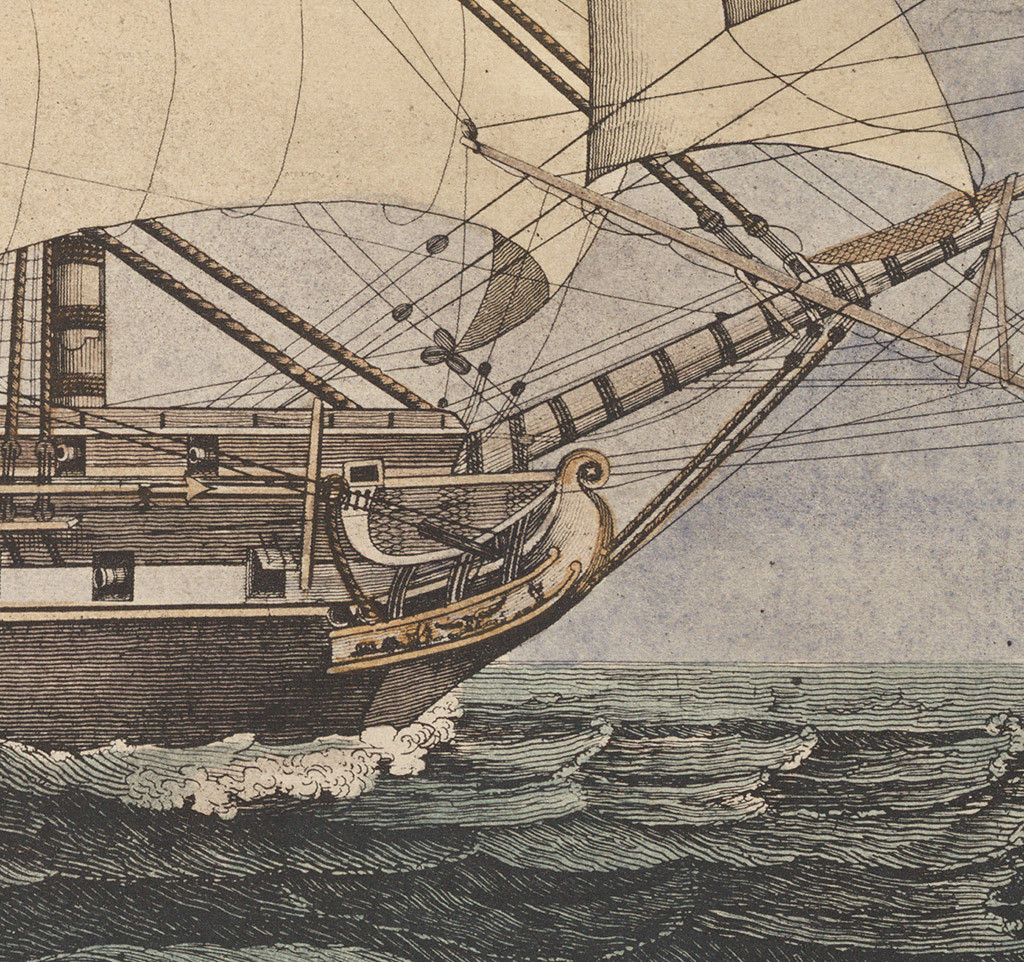

As the carved figureheads changed throughout the 19th century, so did the trailboards. In one of the earliest known photographs of USS Constitution, taken by photographer Albert Gregory on May 27, 1858 at the Portsmouth Naval Shipyard, the second Andrew Jackson figurehead surmounts flowing and trailing vines that decorate the cutwater.
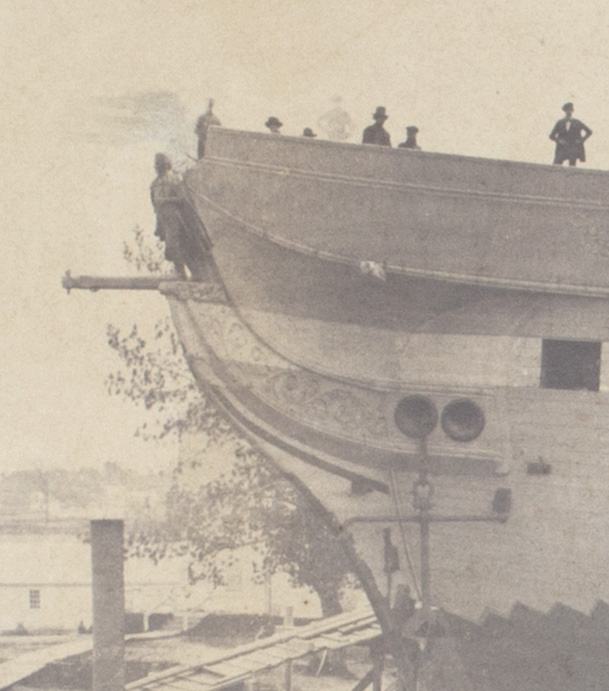

The second Andrew Jackson figurehead and its accompanying trailboards were removed at the beginning of the on-again, off-again 1872-1877 rebuilding of Constitution at the Philadelphia Navy Yard. The c. 1875 photograph of “Old Ironsides” on the marine railways shows the cutwater completely devoid of its decorations – no figurehead, no trailboards. By the time the ship was finished in 1877, Constitution‘s bow carried not only a new billethead, but new trailboards, as well.
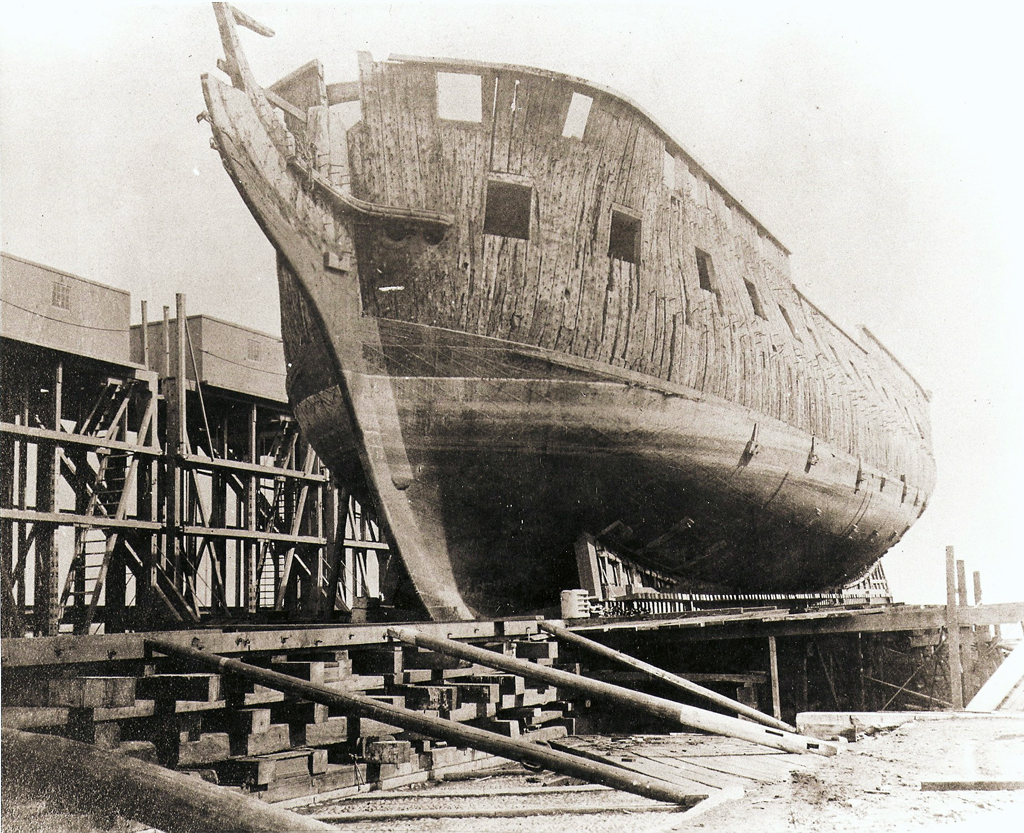

Unlike earlier trailboards that had exhibited standardized vine, floral, and leaf motifs, the 1876 cutwater carvings sported bold red, white, and blue shields with four stars each. These shields may have been employed as a reference to the centennial celebrations of the United States in 1876. It was hoped that Constitution‘s 1870s rebuild would be completed in time for the Philadelphia Centennial Exposition — sadly, the rebuild was not finished for another year.
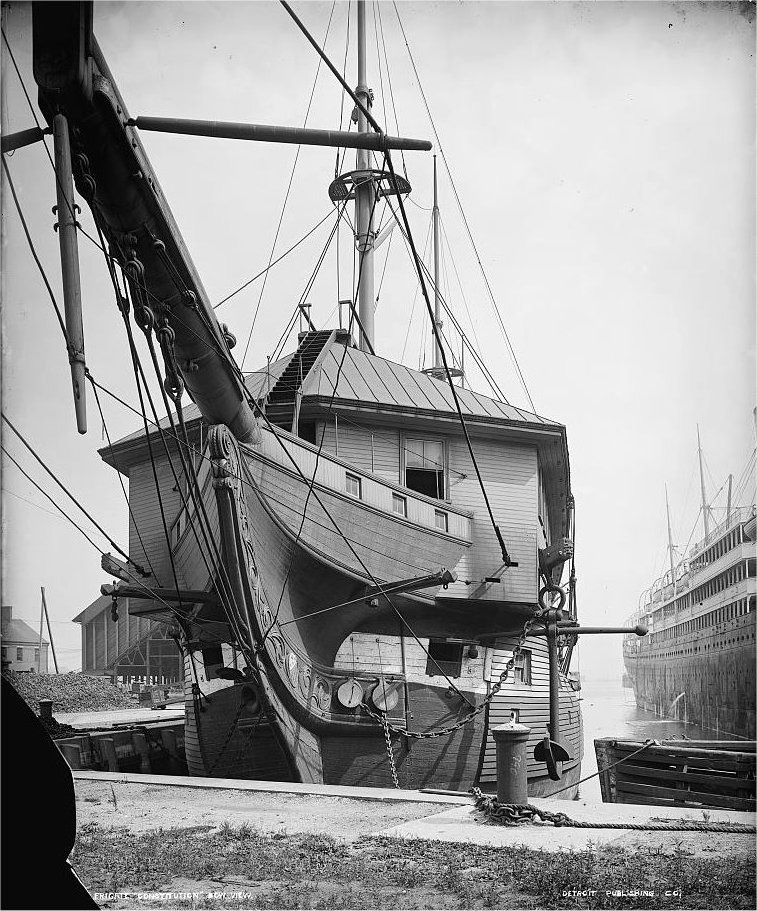

The 1876 trailboards remained on Constitution‘s bow until the 1927 restoration in the Charlestown Navy Yard. Lieutenant John A. Lord, who supervised the restoration, mixed different periods from “Old Ironsides'” history to “restore” the ship to what he thought was representative of the War of 1812 era. As we have seen from the research into Constitution‘s figureheads/billetheads, and now the trailboards, Lord did not, in fact, restore or recreate a War of 1812 warship. For the trailboards, he perpetuated the 1876 look and the scale drawing (below) was made so that new carvings could be created.
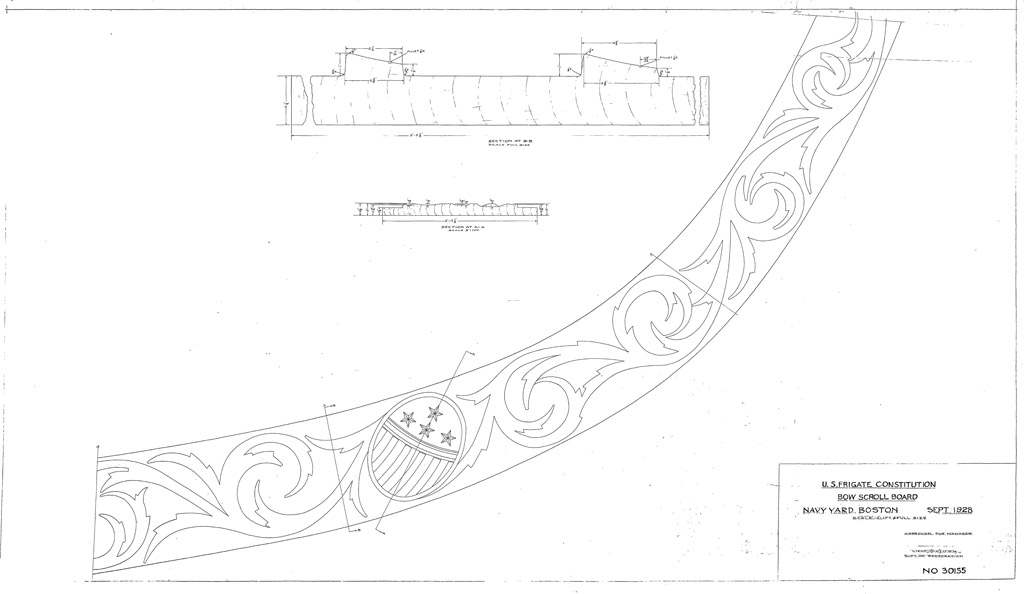

“The scroll [trailboards] on [Constitution‘s] bow was replaced by one which had been made in my shop. The original was given to me and which I have at the present time. I would like to have it preserved in some marine museum, and wish at this time to offer it to the Peabody Museum as a gift from me. Will you accept it?” [Letter, William A. Bates to the Trustees of the Peabody Museum, Aug. 13, 1951, Peabody Essex Museum collection]
Three days after Bates wrote his letter, Ernest Dodge, director of the Peabody Museum, responded, “I should like to say on behalf of the Trustees of the Museum that we would be very glad to have [the trailboards].” According the trailboards’ accession records, Dodge personally picked them up at Bates’ home in Stoneham, Massachusetts.
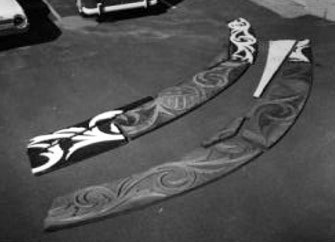

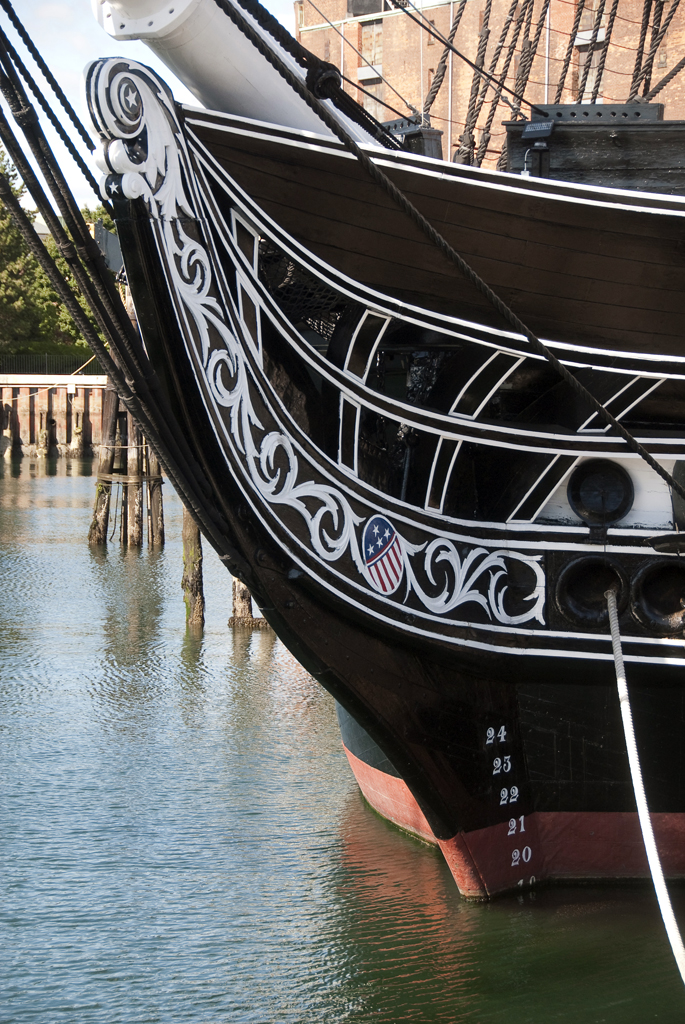

The 1930 trailboards, carved from solid, old-growth Douglas fir, have served as a significant part of Constitution‘s bow decoration for nearly 90 years. In 2015, they were removed as part of the rebuilding of the ship’s cutwater. Once taken off the bow, the degraded nature of the carvings was quite evident. The trailboards are being replaced during the 2015-2017 restoration. The new ones are carved from mahogany and mounted on Douglas fir backing boards.
Josh Ratty, Naval History & Heritage Command Detachment Boston ship restorer, has the task of carving the new trailboards using a GEMINI Universal Carving Duplicator machine. Josh’s background includes new construction on both fiberglass boats and metal ships. But, as he says, “The bulk of my woodworking experience prior to joining NHHC came from time constructing scenery for theatre productions. My career has been an odd mix building high end fiberglass boats, Broadway shows and custom mega-yachts.”
“I love that we go to work each day on what is such an important part of our history. There really isn’t another opportunity out there that compares to what we get to do. It’s impossible to walk the decks each day without pausing to consider the legacy that this ship represents and those who have come before us. I take great pride in knowing that my work will allow future generations the opportunity to experience all the ship has to offer.” [Josh Ratty, Naval History & Heritage Command Detachment Boston ship restorer]
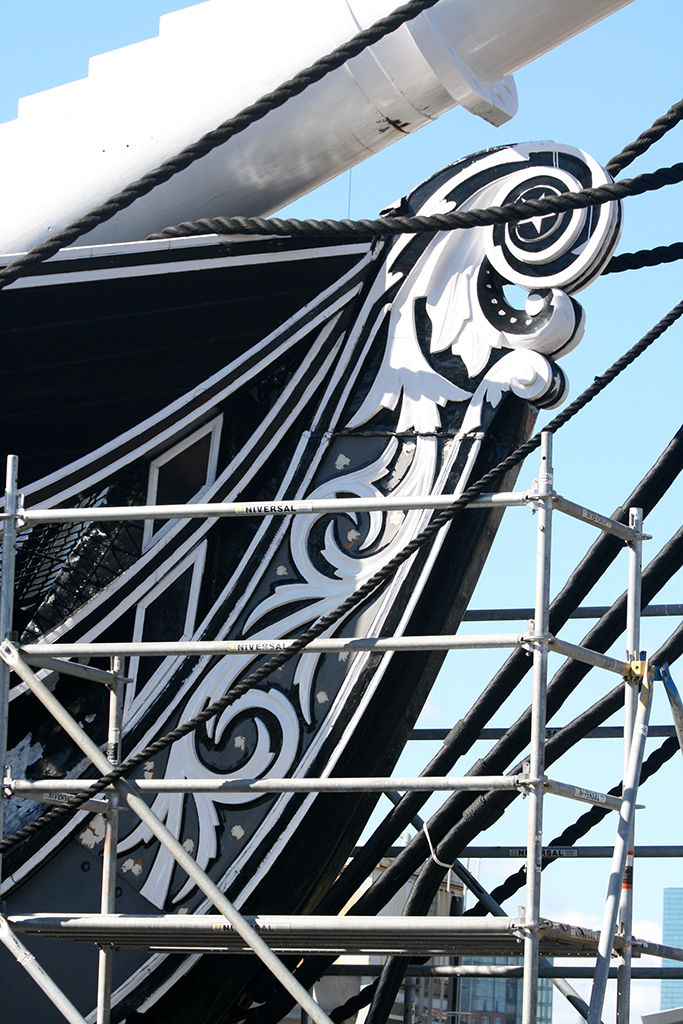

The activity that is the subject of this blog article has been financed in part with Federal funds from the National Maritime Heritage Grant program, administered by the National Park Service, U.S. Department of the Interior, through the Massachusetts Historical Commission, Secretary of the Commonwealth William Francis Galvin, Chairman. However, the contents and opinions do not necessarily reflect the views or policies of the Department of the Interior, or the Massachusetts Historical Commission, nor does the mention of trade names or commercial products constitute endorsement or recommendation by the Department of the Interior, or the Massachusetts Historical Commission.
The Author(s)
Margherita Desy, Historian, Naval History and Heritage Command Detachment Boston
Historian, Naval History and Heritage Command
Margherita M. Desy is the Historian for USS Constitution at Naval History and Heritage Command Detachment Boston.
